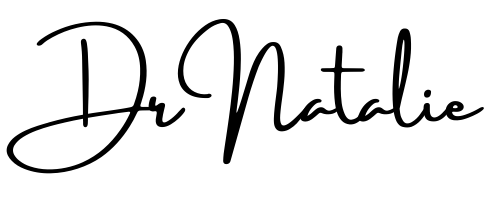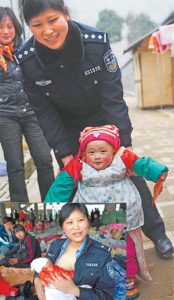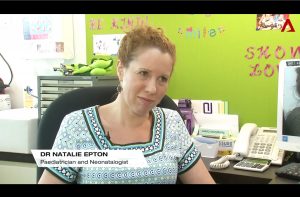Informal breast milk sharing is not a new concept. Cross-nursing- where one family member nurses both their infant and the infant of a close relative or friend- has existed since the dawn of time. There are accounts of wet-nurses (women who nursed other people’s babies for a living) dating back several centuries. And more recently there have been moving accounts of female aid workers in disaster zones offering their breast milk to babies who have been separated from their mothers.
The WHO states that:
“The vast majority of mothers can and should breastfeed, just as the vast majority of infants can and should be breastfed. Only under exceptional circumstances can a mother’s milk be considered unsuitable for her infant. For those few health situations where infants cannot, or should not, be breastfed, the choice of the best alternative – expressed breast milk from an infant’s own mother, breast milk from a healthy wet-nurse or a human-milk bank, or a breast-milk substitute fed with a cup, which is a safer method than a feeding bottle and teat – depends on individual circumstances.” (WHO & UNICEF 2003, p. 10)
However, what do mothers do when they find that they are unable to breastfeed, or are unable to provide sufficient breast milk for their growing infant?
Informal breast milk sharing platforms such as Human Milk For Human Babies (HM4MB) have sprung up on the internet over recent years. These use social media platforms to offer the opportunity for potential donors and recipients to interact and share breast milk. However, concerns have been raised about this practice, and the potential risks involved.
The History of Breast Milk Banking:
The earliest recorded breast milk bank was founded in Vienna, Austria in 1909. Shortly afterwards, in the 1920s, another breastmilk bank was opened in North America. The number of breastmilk banks steadily increased until the 1980s, when concerns about HIV caused many to close.
Over the last several years, there has been a huge increase in the number of breast milk banks across the world. There are over 200 milk banks in Brazil alone. Europe has approximately 220 breastmilk banks; Australia has 5 and the USA has over 20, with more planned.
The majority of these breast milk banks exist to serve the needs of sick or premature hospitalised newborns. These babies are at risk of acquiring infections, and other serious conditions such as necrotising enterocolitis (NEC). NEC occurs almost exclusively in premature babies; around 90% of cases occur in premature babies. Breast milk has been shown to reduce the incidence of NEC, as well as other infections in sick and premature babies in the hospital setting. It is estimated that NEC occurs in approximately 2-2.5% of babies admitted to the Neonatal Intensive Care Unit.
Australia estimates that the cost of treating babies with NEC is approximately $26 million AUD. The cost of setting up a breast milk bank is around $200,000-$250,000 AUD, with annual running costs of $200,000-$250,000 AUD. A recent Cochrane review estimates that 33 infants would need to be fed donor breast milk to prevent one case of NEC.
What Makes A Good Donor?
Milk banks screen potential donors for potentially serious diseases such as:
- HIV
- Hepatitis B
- Hepatitis C
- Syphilis
- Cytomegalovirus
Donors should not smoke tobacco, drink alcohol, or be taking medications. They should be otherwise healthy and well, and be able to provide sufficient milk for their own infant. The donation is voluntary and non-remunerated (there is no payment involved) to discourage people from taking breast milk from their own infants for profit.
Once breast milk is collected, it is tested for bacteria and viruses, and then pasteurised (ultra-heat-treated). It is then tested again for potential infections, before being frozen and stored appropriately, ready for use.
Why Is Informal Breast Milk Donation Potentially Dangerous?
- There is no way of knowing whether a donor has a potentially dangerous infection; even she may be unaware that she has such an infection.
- The milk may contaminated with bacteria which would not be killed except by pasteurisation.
- The donor mother may be taking medications that could pass into the breast milk causing possible side effects in the baby.
- The donor may not be aware that she should not smoke or drink alcohol.
- The donor milk may not have been stored appropriately in a sterile container.
- The donor milk may have been thawed and refroze, increasing the risk of bacterial contamination.
- The breast milk may not be suitable for the recipient baby: breast milk changes over time to be suitable for the changing needs of a growing infant. Breast milk that is suitable for a 9 month old may not be suitable for a 9 week old.
What Can You Do?
Donor:
Look for a formal breast milk bank near to you, so that your excess breast milk may be safely used to feed sick or premature babies in the hospital setting, and potentially save lives.
Recipient:
- Only accept breast milk donation from a trusted source, such as a family member.
- If possible, request the donor undergo testing to screen for potentially serious infections; if they were donating to a formal milk bank this would be a requirement, so should not cause offense.
- Ensure the donor is not a smoker, does not take alcohol and is not taking any medications- even over the counter ones.
- Talk to the donor about how she sterilised her equipment and stores the breast milk.
Formula milk is a safe and acceptable alternative to human milk, and should be used in preference to donor human milk in cases where there is any doubt about the safety of the donor milk. In the absence of appropriate screening of potential donors, and quality assurance of the storage and handling of breast milk, it is preferable to recommend the use of formula milk for those babies whose mothers are unable to breastfeed, or unable to provide sufficient milk.
For more on this story, watch:
http://www.channelnewsasia.com/news/videos/lksharing-8869810
What are your thoughts on breast milk banking and informal breast milk sharing? If you enjoyed reading this story, remember to subscribe by entering your email in the subscriptions box to receive weekly medical and parenting content. Have a great week ahead.



Leave A Reply